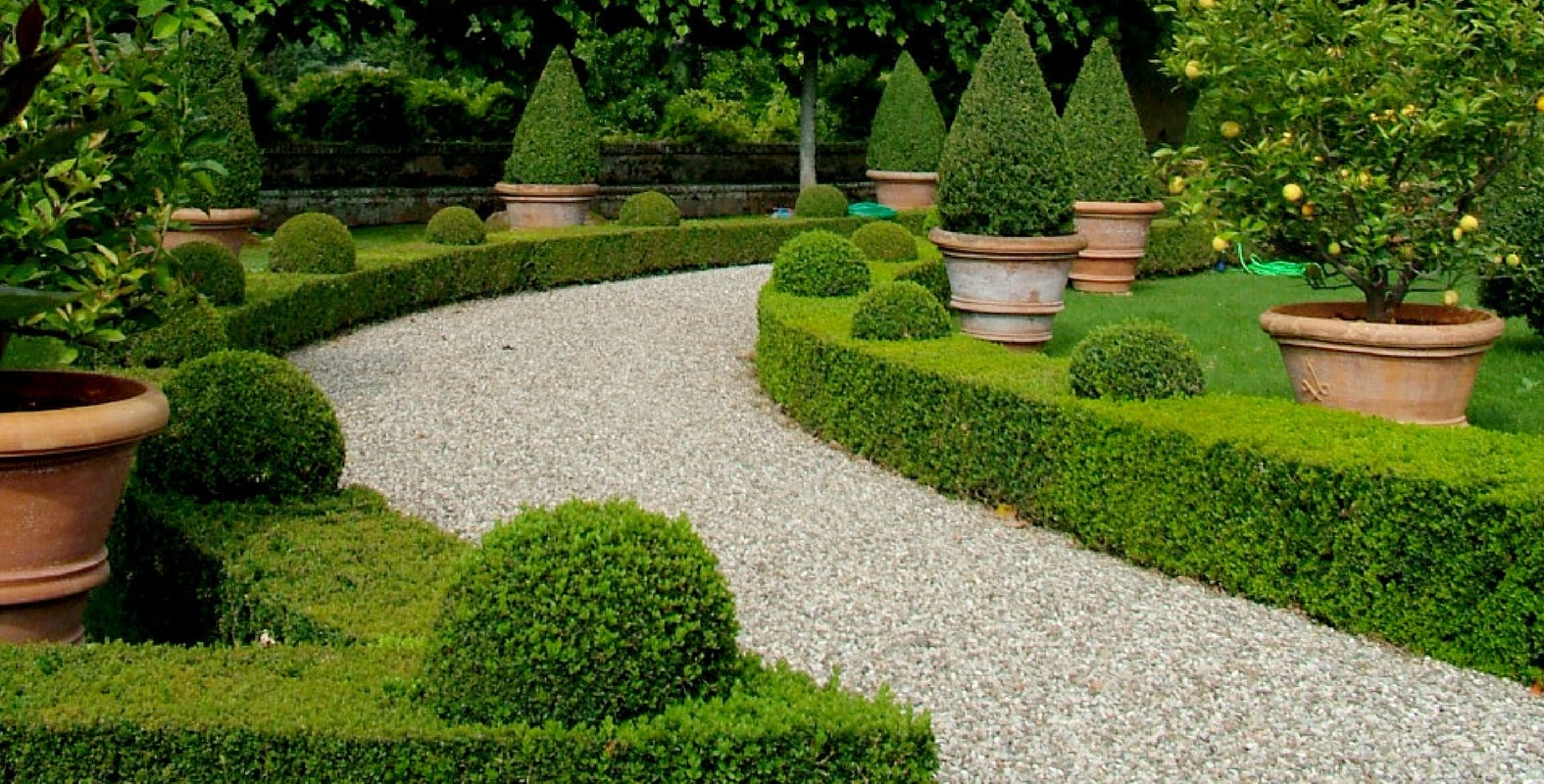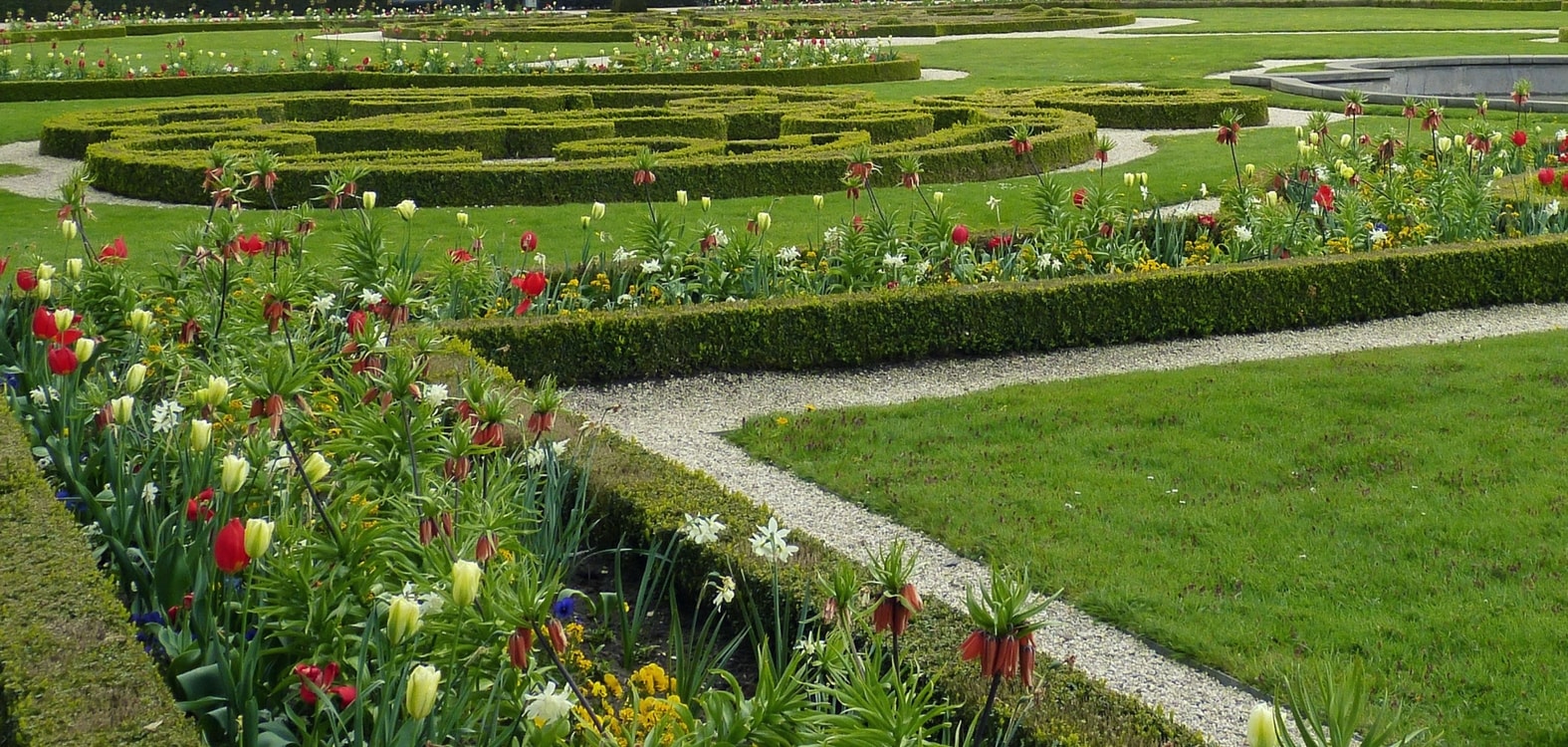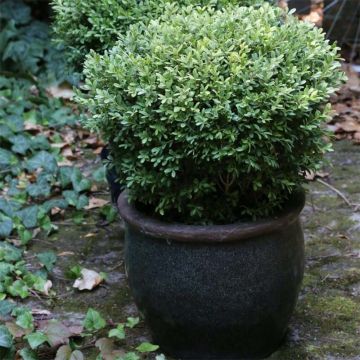
Planting a boxwood border
All our tips on when, where, and how to plant
Contents
The boxwood, or Buxus sempervirens, is a typical plant of French gardens, where it has enabled the development of topiary art, alongside yew, which also tolerates pruning very well. Boxwoods accept the most fanciful prunings and can take the form of pyramids, balls, spirals, or other sculptures. They are also often used as borders or low hedges, pruned into squares, to delineate flower beds in French gardens. They offer a foliage that is both evergreen, compact, and uniform, with a beautiful green colour. They grow slowly, which limits the frequency of prunings. Discover all our tips for successfully planting a boxwood border!
Which variety to choose?
For a beautiful border, we recommend the ‘Suffruticosa’, which is slow-growing but very dense. Its habit is more compact than others: it does not exceed 1 metre in height. For a taller hedge, choose the species type, Buxus sempervirens. There are also varieties with variegated foliage, green and yellow.
The choice of boxwood variety depends on the desired effect and the maintenance you are willing to dedicate to it:
- For a low and dense border, the variety Buxus sempervirens ‘Suffruticosa’ is ideal. This slow-growing boxwood naturally forms a compact and rounded habit, not exceeding 80 cm to 1 m in height. Its fine and dense foliage allows for neat and elegant borders with minimal pruning.
- For a taller or more structured hedge, opt for the species type, Buxus sempervirens. More vigorous, it can reach several metres in height and withstands pruning very well.
- For a touch of originality, some varieties offer variegated foliage of green and yellow, such as Buxus sempervirens ‘Golden Dream’ or ‘Elegans’. These varieties are perfect for adding a bit of brightness to borders and hedges.
Whatever your choice, be sure to select healthy young plants that are suited to your soil and climate to ensure a beautiful and lasting border.
When to plant boxwood?
Buxus is best planted in early spring (March-April) or in autumn (September-November), when the soil is still soft and temperatures are moderate. These periods allow young plants to establish their roots well before the intense summer heat or the rigours of winter.
Absolutely avoid planting during frost or heatwave periods, as extreme conditions weaken the roots and compromise the establishment of the plants. In case of drought, ensure to water the young buxus regularly to promote their healthy development.
If planting in autumn, mulching around the base of the plants will help protect the roots from the cold and maintain good soil moisture.
Discover other Buxus - Boxwood
View all →Available in 1 sizes
Available in 4 sizes
Available in 4 sizes
Available in 1 sizes
Available in 1 sizes
Available in 1 sizes
Available in 1 sizes
Available in 2 sizes

Where to plant a boxwood border?
Undemanding, boxwoods tolerate all exposures, both sun and shade. They do however prefer partial shade.
They tolerate all types of soil, even dry or chalky, but appreciate rich soils. We recommend adding a bit of compost or organic fertiliser when planting.
They are sensitive to stagnant moisture: if your soil is heavy, place a layer of pouzzolane or gravel at the bottom of the planting hole to allow for drainage. Additionally, by planting them in well-draining soil, you will limit the occurrence of diseases caused by fungi that are currently causing significant damage to boxwoods.
How to plant?
- Start by stretching a string line at the desired location to create a straight edge.
- Dig a trench along the string line, to a depth and width of a spade.
- You can place some pumice or gravel at the bottom to aid drainage.
- Fill the trench halfway with soil mixed with well-decomposed compost and a bit of fertiliser.
- Take the boxwood plants one by one and press them against the wall of the trench, placing one plant every 20 cm. For an immediately dense effect, you can go as close as one foot every 15 cm. If you want a taller hedge, space them 70 cm apart. In this case, avoid the ‘Suffruticosa’ variety, which is quite compact.
- Fill in by replacing the soil around the young plants, then firm it down.
- Water generously.
We recommend installing a mulch to keep the soil cool and also limit the growth of weeds.

How to maintain your boxwood border?
Prune for the first time approximately six months after planting, then regularly, once or twice a year. Work at the end of winter and the beginning of autumn, avoiding periods of frost or extreme heat, in dry weather. Cut the young shoots using shears, possibly using a string line to achieve a straight cut. Pruning boxwood will help maintain a neat alignment and dense foliage, ensuring a beautiful border.
Boxwood is currently facing serious health issues. It is seriously endangered by the box tree moth, a nocturnal butterfly whose caterpillars devastate the plants. To address this, you can use an organic insecticidal product made with the bacterium Bacillus thuringiensis or pheromone traps. Boxwood is also attacked by two fungi, Cylindrocladium buxicola and Volutella buxi. When the plant is affected, brown spots appear on the foliage, which then dries out and falls off. Disinfect your shears when pruning boxwood to avoid spreading these diseases. Also, avoid watering by spraying as moisture on the foliage promotes their development.
- Subscribe!
- Contents






































